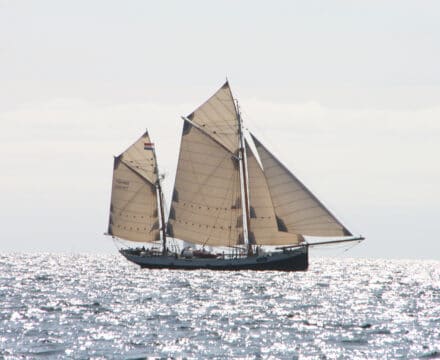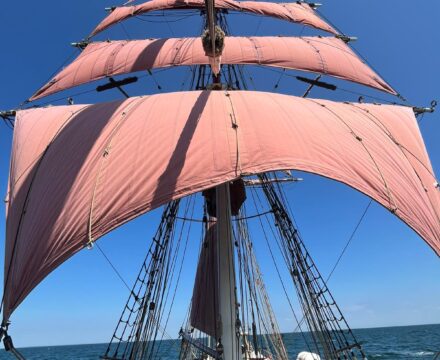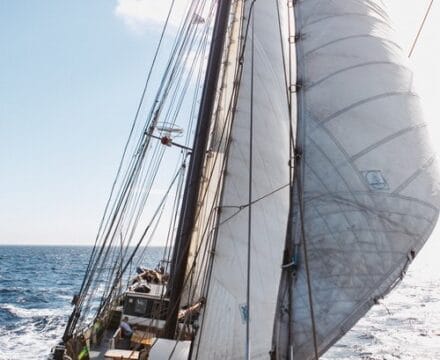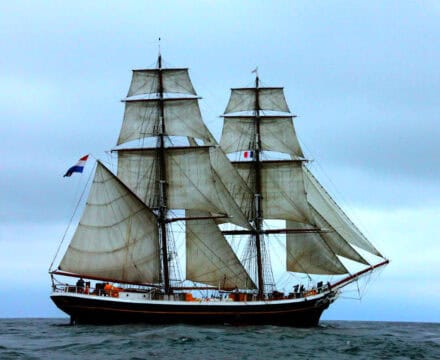An Atlantic sail is often seen as the ultimate blue-water challenge, but what is it really like? Beyond the romantic notion of endless horizons and steady trade winds, an Atlantic crossing is a test of adaptability. Can you adjust to life away from the internet, enjoy living in close proximity to a small number of people for quite a long time? You don’t need sailing skills, just a real understanding of the phrase ‘we are all in the same boat’.
A Sailor’s Perspective on the Atlantic
I have crossed the Atlantic and sailed its edges many times. One of the most memorable crossings was from Cape Verde to Antigua, a true tropical route with steady downwind sailing and warm sunshine aboard Grayhound. That voyage included Christmas and New Year at sea in 2012–2013. Like many voyages, I’m still in contact with friends I made on that trip over 12 years ago.
For a cold voyage I chose to sail from Ushuaia, the southernmost port in Argentina, to Cape Town via Antarctica, South Georgia, and Tristan da Cunha on a Dutch tall ship. If I had the time and money I would repeat that voyage as often as possible. There is nothing to beat it. Look here for Atlantic Voyages
You don’t have to cross the whole Atlantic to experience its wonders. There are ample opportunities to sail its vast and varied coastline. I’m glad to say I’ve sailed much of the European Atlantic seaboard, from the Canaries to the Shetlands, the Faroes, and Iceland. Plus the whole Atlantic coastline of Argentina and around Cape Horn into the Pacific coasts of Chile and Peru.
Whether you’re following the well-worn trade wind routes or braving the Southern Ocean’s unpredictable swells, watching out for icebergs and whales, no two crossings are the same.
History
Every Atlantic crossing follows routes forged by history. If you want to understand how these journeys shaped the world, our guide to traditional Atlantic crossings explores the routes and skills that defined ocean passage sailing.
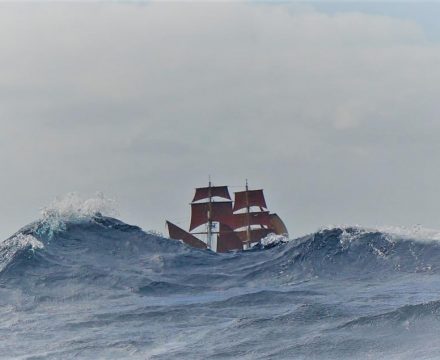
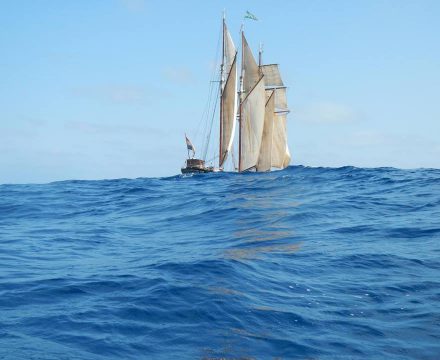

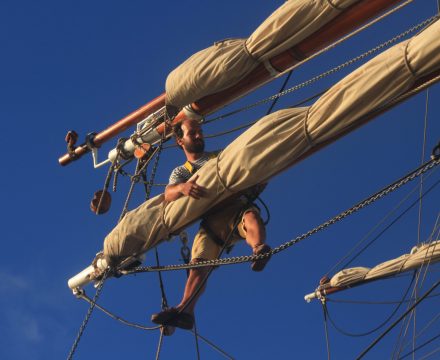
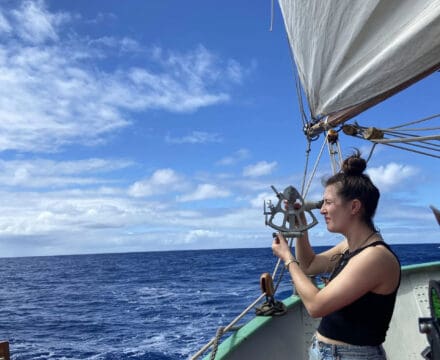
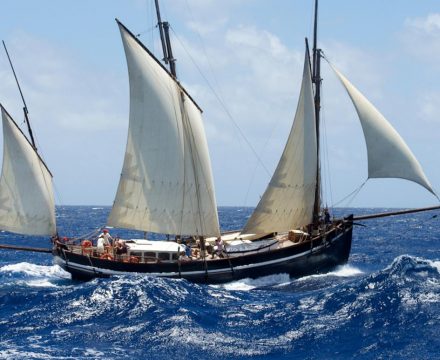
Life at Sea: The Daily Reality
An Atlantic voyage is measured in weeks, not days. The transition from land to sea takes time. The first couple of days may bring seasickness for a few, while others struggle to adjust to the constant motion. By the end of the first week, routines settle in. Watch rotations become second nature, and the ship starts to feel like home.
There’s a purity to ocean sailing that’s difficult to describe. No phone signal. No distractions. Just the wind, the sea, and the ship beneath your feet. Days blend together, marked by the changing watch schedule, meals, sail changes, and the occasional wildlife encounter. Dolphins at the bow, phosphorescence in the wake, and the sight of the first flying fish are all part of the experience.
The Challenge of a Long Passage
There’s no escape from the elements. The mid-Atlantic can be a place of relentless sun, sudden squalls, or frustrating calms. Further south, the weather is harsher, the sea colder, and ice can be a real hazard.
In the tropics, fresh water can be precious. We had a great shower on deck on Grayhound powered by dropping thousands of feet from a tropical downpour. The ability to adapt to life without modern conveniences is part of the journey. You may well experience internet withdrawal symptoms and it is sensible to plan to be without it. See our guide to Being Offline
Crew dynamics also play a huge role. With no easy way out, teamwork is essential. On long passages, you learn to rely on those around you, whether you’re reefing a sail in the middle of the night or sharing the last of the fresh fruit before the ship’s stores switch to frozen and tinned. The ship becomes a small hamlet and everyone has an important part to play in keeping the ship going 24/7.
What You Gain from an Atlantic Crossing
An ocean crossing changes how you see the world. The vastness of the Atlantic is humbling. You realise how small you are in comparison to the forces of nature. You also learn the value of self-sufficiency, the practicalities of navigating by the stars and sun, reading the weather, and managing resources carefully.
Don’t panic, there are modern navigation systems, emergency global communications and well-planned provisions. Did you know eggs will last up to 9 months if stored at 12°C (55°F) with 85% humidity? (It helps if they have not been frozen beforehand.)
Beyond the practical skills, it’s an experience that gives perspective. Time at sea strips away the noise of modern life. You start to appreciate simple things. Hot coffee and a small snack on a cold night watch. The perfect set of sails in a fresh breeze, the relaxing motion of the ship as you lie in your bunk, certainly sets me to a happy sleep.
One of my greatest joys is to be the first to spot the land at the end of a crossing and shout those famous words, “Land ahoy.” Of course, it helps if you keep an eye on the ship’s chart and know not only when that is likely to be but also plan to go aloft at the optimum time. Notable examples I have achieved are the Faroes and Table Mountain in South Africa.
Is an Atlantic Crossing for You?
If you’re considering an Atlantic voyage, be prepared for a test of endurance, both mental and physical. It’s not a holiday in the traditional sense and you only need to know you enjoy being at sea, no sailing skills are required. It’s an adventure that demands commitment. But if you’re drawn to the idea of watching the stars from the deck of a sailing ship, feeling the power of the ocean beneath you, and experiencing the true rhythm of life at sea, then it’s a challenge worth taking,.
Get out there and enjoy!
